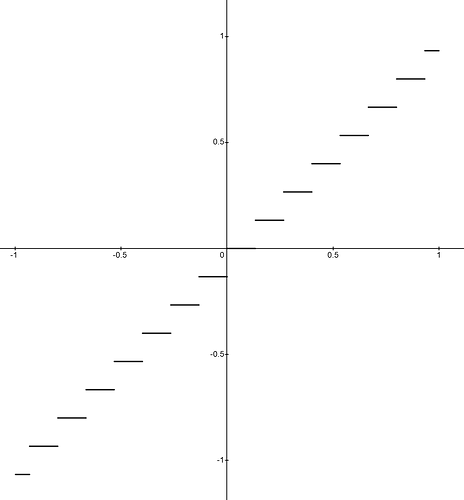Companding is a portmanteau of the words compression and expansion.
Dolby noise reduction used it to reduce the tape hiss inherent in tape playback systems. During recording, they would amplify the quiet parts of a signal (compression, red line) and then during playback, they would attenuate the quiet parts (expansion, green line). This would effectively maintain the dynamic range of the audio signal (the compression and expansion would cancel out, blue line) but the tape hiss would be attenuated by the second step.
This is super useful in low-bit depth systems. People realized that speech and audio signals have a really wide dynamic range (e.g. when speaking, vowels are quiet while consonants are loud). Consonants are usually like sharp transients though and they happen so quick that our brain doesn’t need much information from them to be decipherable while quiet sounds are more important.
If we use a normal bit reduction system on speech or audio, it encodes the loud and quiet information equally:
Normal bit reduction using 4 bits:
If we do compression before the bit reduction and then expand after, more data is retained for the quiet parts of a signal and loud parts of the signal are lost. This is what some 8 and 12 bit samplers did to improve sound quality and make audio sound more natural in low-bit systems (but they still sound pretty dang gritty).


